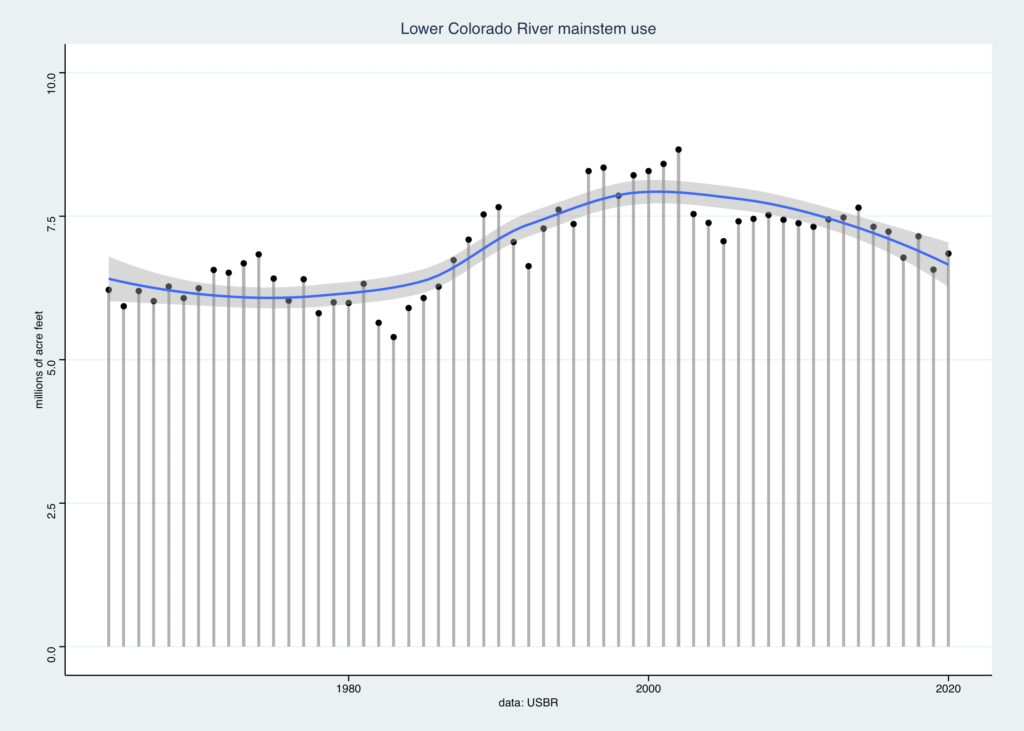
Bending the curve back down
A friend last week pointed out something remarkable. Arizona, California, and Nevada are forecast this year to use just 6.8 million acre feet of their 7.5 million acre foot allocation of water from the main stem of the Colorado River. And that’s not just a one-off.
Under “Tier Zero” of the Colorado River Basin Drought Contingency plan, the states are allowed to take 7.3 million acre feet of water, but from 2017 to 2020, the Lower Basin states’ average has been 6.8 million acre feet. The last time the four-year average was that low was 1984-87.
With a release of just 8.23 million acre feet from Lake Powell this year, Lake Mead is nevertheless forecast to end the water year up a foot over last year. For a while, I and others have been arguing (see here, for example, for some trouble I caused myself when arguing thus) that the Lower Basin has only been able to stabilize Lake Mead on the backs of excess releases from upstream, the 9 million acre foot releases under the terms of the 2007 interim guidelines.
Are we moving beyond that?
* As my collaborator Eric Kuhn frequently notes, these numbers do not include the use of tributary water within the states of the Lower Basin, by which we mostly mean Arizona.
Sources: USBR forecast for 2020 water use, USBR water accounting reports
